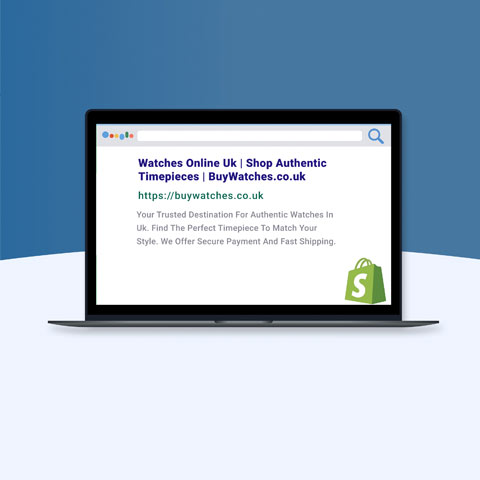Content Commerce: Content Marketing in eCommerce


For a long time, online stores only provided concise product information and SEO texts, requiring people to seek additional content elsewhere. Today, ecommerce is increasingly combining content and commerce: online customers want to be informed, inspired, and entertained throughout the entire buying process. Content commerce, or content-driven commerce, offers great opportunities for companies. By providing an excellent digital experience, companies can stand out and retain their customers, but the implementation is complex.
What is the real benefit of content marketing in ecommerce? How does it work in practice, and what technologies are needed? This article explains content commerce in detail.
Content commerce: Content marketing in ecommerce
For a long time, online stores only provided concise product information and SEO texts, requiring people to seek additional content elsewhere. Today, ecommerce is increasingly combining content and commerce: online customers want to be informed, inspired, and entertained throughout the entire buying process. Content commerce, or content-driven commerce, offers great opportunities for companies. By providing an excellent digital experience, companies can stand out and retain their customers, but the implementation is complex.
What is the real benefit of content marketing in ecommerce? How does it work in practice, and what technologies are needed? This article explains content commerce in detail.
Content commerce definition
The simplest definition of content commerce is when a company publishes and distributes content to drive product sales through digital channels such as the online store. However, simply offering content falls short. Content-driven commerce requires that content be strategically integrated into the shopping process to provide customers with the highest quality shopping experience possible.
The entire digital customer journey should be supported by content, from the initial idea, through product selection and purchase, to the use of the product after purchase. Customers must be able to access the content they need at any time and at any digital touchpoint.
Why is content commerce becoming increasingly important?
More and more customers are shopping digitally as many buyer journeys are moving to digital channels. The closures of local retailers during the COVID-19 pandemic have accelerated this trend.
Customers need to be offered a similar online shopping experience as in brick-and-mortar stores by manufacturers and retailers without the aid of individual sales staff and being able to touch or try out products. Online stores need to be increased for this as mere product catalogs with a checkout function. Only with content — texts, images, videos, interactive elements — can they "recreate" high-quality customer experiences to share the brand story in an authentic manner that is positively welcomed.
Potential customers have dozens of questions and need assurance that they are making the right decision. That is why advice on technical products, travel, or even fashion should be prioritized.
Content creation can provide the answers. In addition, customers are increasingly demanding to be entertained and inspired while shopping beyond pure information.
Beating ecommerce giants like Amazon or global brands in terms of offering and performance is almost impossible. Many products are interchangeable. However, unique content offers the opportunity to differentiate oneself and to bind customers to one's own brand.
Content types and channels
What types of content can you use to support their customer journeys and provide unique digital customer experiences?
In their own online store or digital channels:
-
Product descriptions
-
Product data, such as specifications and technical data, prices, delivery data
-
Pictures, videos, animations of the product and its application
-
Purchase advisors, configurators
-
Instructions, FAQs
-
User-generated content, such as reviews, testimonials, experience reports
-
Blog, editorial articles
-
Email marketing
-
Microsites, landing pages
According to the 2023 HubSpot research, marketers are incorporating video as a media format with a significant 50% margin in their marketing strategy, as it also offers the highest return on investment (ROI).
Other digital channels include:
-
Social media posts and campaigns
-
Affiliate and influencer campaigns
-
Test reports, technical articles, PR
-
Reviews on portals
-
Online forums, answer questions relating to the product.
What opportunities does content commerce offer?
There are numerous benefits of starting content-led commerce for your organization or business.
Some of these benefits content commerce offers are:
High-quality customer experience
Online shopping has hardly been a substitute for shopping with friends, it’s too technical, too boring, and not an experience. And those who needed advice preferred to go to a store with real salespeople.
Through content-driven commerce, retailers and brands can offer their customers better shopping experiences — including advice and excitement.
Learn more about experience-driven commerce.
Higher purchase rate
According to various studies, 60 to 80 percent of all online shoppers leave products in the shopping cart and do not complete the purchase. That’s because, shortly before payment, doubts can arise. For example, customers may ask “Is the product really the right one?” The better informed customers feel, the more likely they are to complete the purchase with them.
Lower rate of returns
According to a SalesCycle study, about one in four online products are returned. In some product categories, such as fashion, two-thirds of all products ordered end up as returns, with common reasons being:
Common reasons are:
-
The product looks different in real life than it does in photos
-
A garment runs larger or smaller than usual
-
Customers realize when they try it out that the product just doesn't meet their expectations
By providing detailed information, photos and videos, you can prevent your online customers from making the wrong purchase and reduce the number of returns.
Relieving the burden on customer service
Fewer returns also mean less work for customer service, call centers and returns processing. Help your customers use the product after purchase — through content like how-to guides or FAQs — to use the product skillfully and avoid mistakes. Then, fewer problems occur that they have to solve through their customer service.
Differentiation from competitors
Your competitors probably offer similar products to yours or even sell the same range. It's hard to differentiate yourself purely based on what you offer. And offering more customer service than Amazon is hardly possible.
Your content offers one of the few opportunities in ecommerce to truly stand out from the competition. Through the individual style of your content, you can offer customers a unique experience that they can only get from you.
More recommendations
Even in the digital age, word of mouth and "asking friends" are essential to buying decisions. But sending a bare link to the online store is no fun. The more unique and entertaining content you can distribute, the easier for your target groups to recommend you via messaging apps or social media platforms among friends.
Search Engine Optimization (SEO)
Thanks to Google, YouTube, Pinterest, and more, targeted searches for products or ideas are often the prelude to a buying process. On average, organic traffic accounts for one-third to one-half of all visits to online stores. Through your content, you will be found more often — not only with your online store but with all the channels you use.
Personalization as a success factor
The likelihood that customers may become overwhelmed and confused increases as ecommerce sites or companies produce more content. The secret of content-driven commerce is to present customers with the only piece of content they need at a given time, i.e., personalized content.
The individualized email newsletter was one of the first methods of personalization. Today's ecommerce and content management systems play out individual campaigns, products or informative content to customers. For different groups of customers or even individuals, the store or website looks completely different. There are many content personalization examples that highlight this approach.
Companies can personalize their content by defining different customer groups and manually assigning customers to these groups, for example, private customers or business customers, male or female customers. Increasingly, algorithms are taking over this task by assigning customers or visitors to segments based on certain characteristics and playing out personalized content. The more data companies have about their customers, the better this works.
Learn more about "What is ecommerce personalization".
The technical implementation of content commerce
As lovely as content commerce sounds and its many advantages for marketing and sales, the technical implementation is a challenge. There was a clear "division of labour" in the past: The online store manages the products, and the content management system manages the website with landing pages, blogs, and other content. Other systems are additionally connected.connected.
Content-driven commerce requires deep integration of content marketing channels with ecommerce functions. This is almost impossible to implement with disparate or only partially compatible systems.
What makes it so difficult, and what does the solution look like?
Technical challenges
The fundamental problem is that data and content are distributed in different systems. Each system has its strengths and special functions, making it more or less suitable for certain types of content. For example, product data is managed in the store solution, marketing texts in the content management system, images and videos in digital asset management software, and the data for personalization comes from the analytics software.
All this data has to be "assembled" for a uniform, digital customer experience. This is technically complex if it works at all. Ecommerce managers, marketers, and content authors have to maintain data in multiple places; often twice and three times, for different channels and formats.
Different channels — such as desktop and app — offer different user experiences. Tracking and personalization also do not work across channels.
Implementation with a headless CMS
A headless content management system (CMS) is the ideal building block in the process of implementing an integrated content commerce concept. You connect all data sources to the CMS.
Content authors can work with all data and content as if it were native, existing content in the CMS. They build campaigns and entire content experiences from the content and create variants for personalization.
The content, in turn, can be played out to a virtually infinite number of different front ends and channels. Since all content is controlled by a central system, customers get truly consistent experiences across all channels, and true omnichannel content marketing becomes possible.
How does content commerce work?
Content commerce creates an engaging and informative experience for visitors by integrating high-quality visuals, descriptive content, customer reviews, personalized recommendations, and social media elements.
The goal is to provide valuable information, build trust, and inspire customers to purchase while enjoying a seamless browsing experience.
Need to be more explicit?
Let's explain how to integrate top-notch content throughout the online shopping journey to deliver an unparalleled and enjoyable shopping experience to customers on a website.
Imagine a hypothetical website called "DressOk!". The following are the content strategies:
Homepage
The homepage should combine attractive visuals, engaging and valuable content, and featured products. It may have a carousel or a hero banner displaying high-quality images related to the products or promotions, along with captivating headlines and call-to-action buttons.
Product pages
Each product page on the website should've comprehensive product information, high-resolution images, and customer reviews. The page should describe the product's features, benefits, and specifications, providing visitors with a rich and informative experience.
Blog section
DressOK! should have a dedicated blog section that offers valuable articles, tutorials, and industry insights related to the products they sell. The blog posts should involve eye-catching featured images, engaging headlines, and well-written educational content that entertains the readers. The blog posts may include relevant product links to guide readers toward purchasing.
Social media
The website should incorporate social media marketing, displaying the brand's social media accounts and feeds. It may showcase visually appealing images and videos shared on platforms like Instagram, Facebook, or YouTube. These posts may highlight product usage, customer testimonials, or behind-the-scenes content, creating a connection between the brand and its customers.
User-generated content
DressOk! should encourage its customers to share their experiences through user-generated content. The website may have a section dedicated to displaying customer-submitted images or videos featuring the products they purchased. The user content creates a sense of community and authenticity, as potential customers can see real people using and enjoying the products.
Personalization and recommendations
The website utilizes customer data and browsing behaviour to personalize the user experience. It should show recommended products based on the customer's past purchases, customer stories, viewed items, or preferences. The recommendations are accompanied by visually appealing images and personalized product descriptions, increasing the likelihood of conversions.
How can you enrich commerce data with content with a CMS like Magnolia?
By using Magnolia's headless CMS to combine content and commerce data from different sources. For instance, a store solution manages data products and marketing texts controlled within the content management system, digital asset management software takes care of images and videos, and customer data platform provides the necessary data for personalization purposes.
The above explanation can be implemented in a website by:
-
Enriching products with marketing content such as FAQs, recipes, tips & tricks
-
Enriching navigations with banners, teasers, etc.
-
Creating entire content fragments or campaigns (banners, copy, etc.) that can be reused across pages
The below image shows how you can combine content (Magnolia) and commerce (in this case, Salesforce Commerce Cloud) on an end-user page.

Learn more about integrating your CMS and ecommerce platform.
Want more like this?
Want more like this?
Insight delivered to your inbox
Keep up to date with our free email. Hand picked whitepapers and posts from our blog, as well as exclusive videos and webinar invitations keep our Users one step ahead.
By clicking 'SIGN UP', you agree to our Terms of Use and Privacy Policy


By clicking 'SIGN UP', you agree to our Terms of Use and Privacy Policy
Other content you may be interested in
Categories
Categories

Want more like this?


Want more like this?
Insight delivered to your inbox
Keep up to date with our free email. Hand picked whitepapers and posts from our blog, as well as exclusive videos and webinar invitations keep our Users one step ahead.
By clicking 'SIGN UP', you agree to our Terms of Use and Privacy Policy






![[Research] Apps: The Secret Engine of Ecommerce Growth [Research] Apps: The Secret Engine of Ecommerce Growth](https://images.bizibl.com/sites/default/files/apps-and-web-similarweb-480.jpg)


